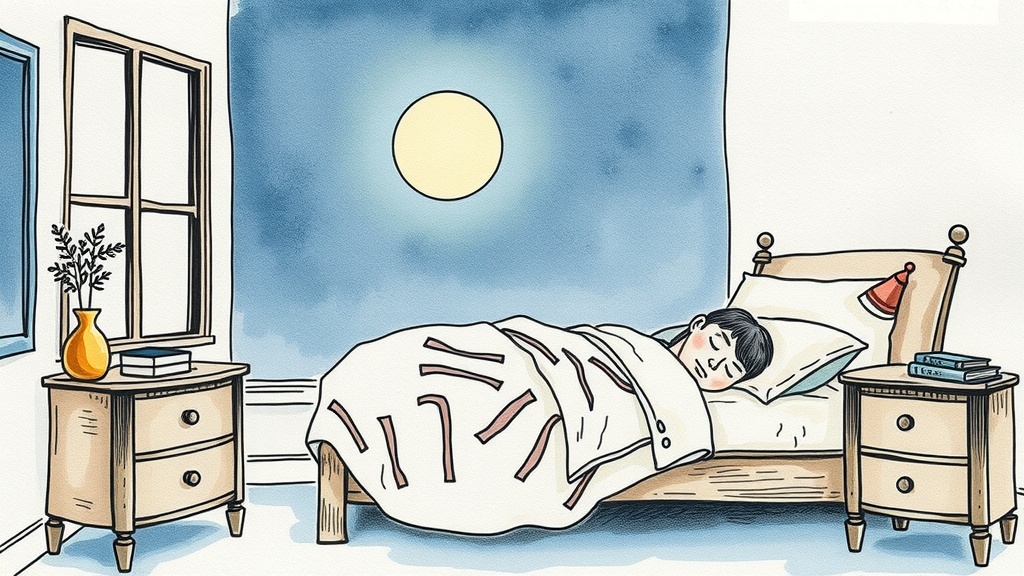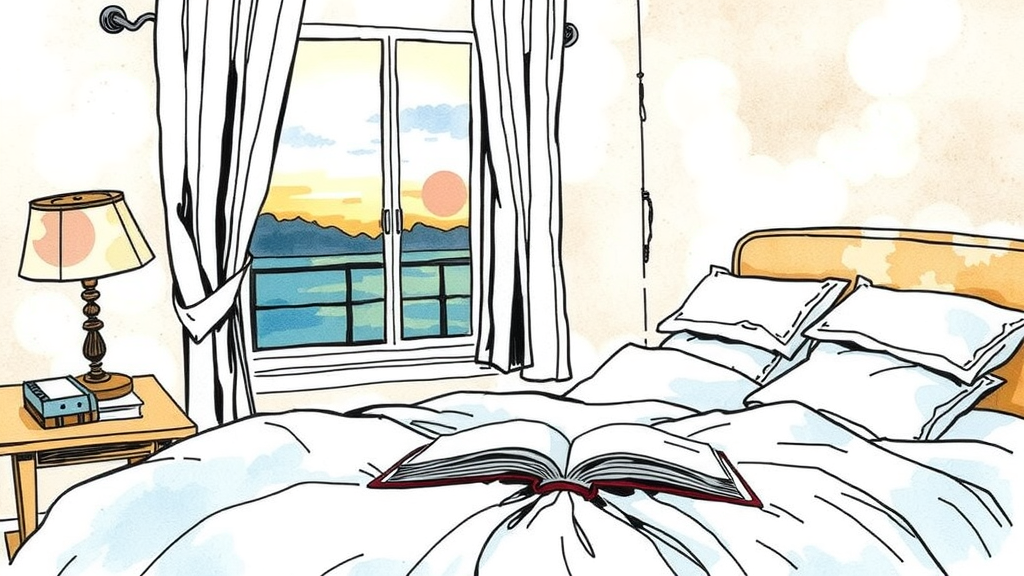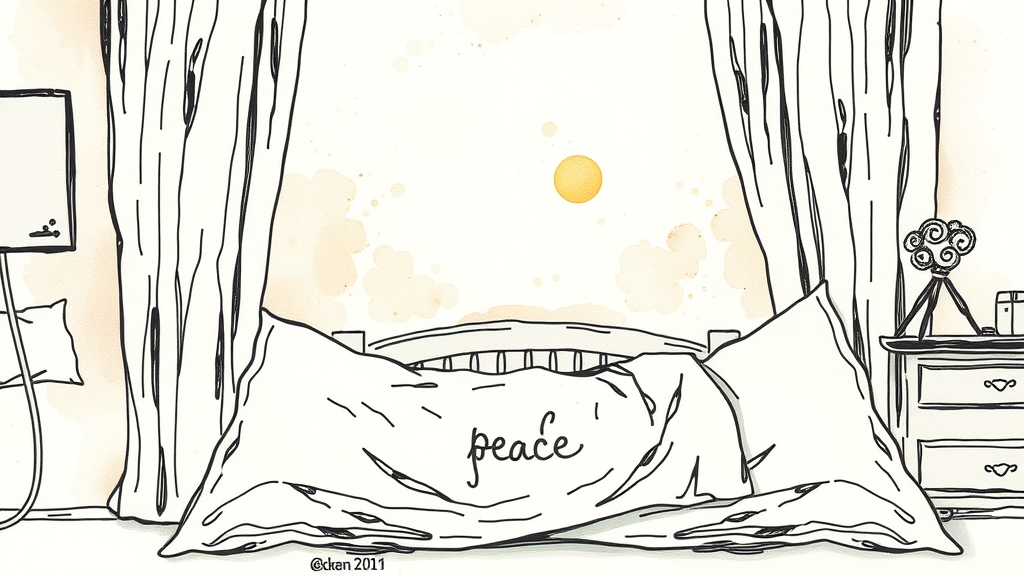· Don Schmidt · Guides · 9 min read
Surviving the Midnight Sun: Mastering Sleep with CBT-I in Alberta's Long Summer Days
Struggling with sleep during Alberta's endless summer daylight? Discover CBT-I techniques to manage insomnia, improve sleep hygiene, and thrive under the midnight sun.
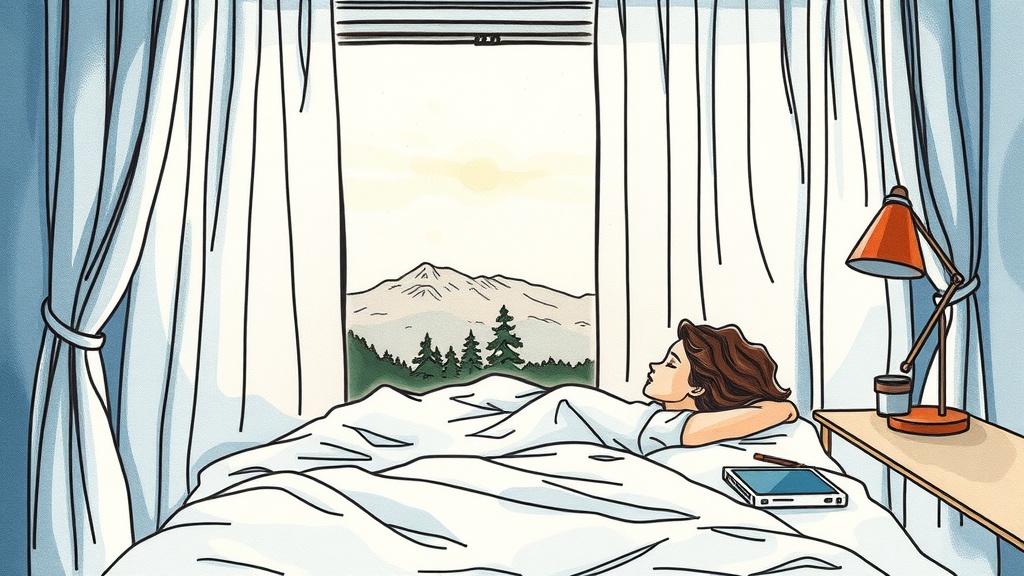
Introduction: When Daylight Never Ends – The Alberta Summer Sleep Challenge
Alberta in summer is a land of breathtaking beauty, endless daylight, and vibrant energy. From the Rocky Mountains to the vast prairies, the province comes alive under skies that linger bright late into the evening and rise exceptionally early. While this extended daylight offers more time for outdoor adventures and cherished family moments, it also presents a unique challenge for sleep: the “midnight sun” phenomenon. For many, the relentless light disrupts the body’s natural circadian rhythm, leading to difficulties falling asleep, staying asleep, and ultimately, chronic fatigue. If you’ve found yourself tossing and turning, wondering why your body insists it’s still daytime at 11 PM, you’re not alone. This article explores how Cognitive Behavioral Therapy for Insomnia (CBT-I), a highly effective and evidence-based treatment, can equip Albertans with the tools to navigate these long summer days and reclaim restorative sleep.
Understanding the Midnight Sun Phenomenon and Its Impact on Sleep
Our internal body clock, or circadian rhythm, is primarily regulated by light. Melatonin, the hormone that signals sleep, is naturally produced in darkness. In Alberta during peak summer months, daylight can extend from as early as 4:30 AM to past 10:00 PM, creating a drastically shortened period of darkness. This prolonged light exposure can suppress melatonin production, confuse the body’s natural sleep-wake signals, and lead to sleep onset insomnia or early morning awakenings. The constant brightness can make it feel as if your brain is always on high alert, making it difficult to wind down and prepare for rest.
The Power of CBT-I: A Comprehensive Approach to Sleep Management
CBT-I is not just a set of tips; it’s a structured program that addresses the thoughts, feelings, and behaviors that contribute to sleep problems. Unlike sleeping pills, which offer a temporary solution, CBT-I provides long-term strategies by retraining your brain and body for better sleep. It’s considered the gold standard treatment for chronic insomnia and offers a sustainable path to improved sleep health. For a deeper dive into understanding this powerful therapy, explore our article on how CBT-I works.
CBT-I consists of several core components, each designed to tackle different aspects of insomnia. When applied thoughtfully, these techniques can be incredibly effective in helping you adapt to Alberta’s summer daylight.
Key CBT-I Techniques for Combating Long Daylight Hours
1. Stimulus Control Therapy (SCT): Reinforcing Your Bed as a Place for Sleep
SCT aims to re-associate your bed and bedroom with sleep and relaxation, breaking the connection with wakefulness and frustration. In a brightly lit summer environment, it’s easy to get distracted in bed. For Albertans, this means:
- Use your bed only for sleep and intimacy. Avoid reading, watching TV, working, or using your phone in bed, especially when the sun is still high.
- If you can’t fall asleep within 15-20 minutes, get out of bed. Go to another room and do a quiet, non-stimulating activity (like reading a book in dim light) until you feel sleepy. Only return to bed when you’re truly tired.
- Wake up at the same time every day, regardless of how much you slept. This helps set your circadian rhythm, which is crucial when natural light cues are unreliable.
2. Sleep Restriction Therapy (SRT): Optimizing Your Sleep Window
SRT might sound counterintuitive—it involves intentionally reducing the time you spend in bed to improve sleep efficiency. The goal is to create a mild sleep deprivation that makes you fall asleep faster and stay asleep more consistently. Over time, your time in bed is gradually increased as your sleep efficiency improves. For summer in Alberta, this could mean initially adjusting your “sleep window” to ensure you’re in bed only during the darkest hours, then slowly expanding it as your body adapts.
3. Cognitive Restructuring: Challenging Unhelpful Thoughts About Daylight and Sleep
Many people with insomnia develop negative or anxious thoughts about sleep, especially when facing persistent daylight. Cognitive restructuring helps identify and challenge these unhelpful thought patterns. Examples include thinking, “I’ll never get to sleep with all this light,” or “The long days are ruining my summer.” Instead, CBT-I teaches you to replace these with more realistic and helpful thoughts, like “I can use blackout curtains and a consistent routine to help my body adjust,” or “Even a few hours of good sleep is better than none.”
4. Sleep Hygiene Optimization: Practical Steps for a Summer Sleep Sanctuary
While not a standalone therapy, robust sleep hygiene is a critical component of CBT-I, especially vital when dealing with extended daylight.
- Create a Pitch-Black Sleep Environment: This is perhaps the most crucial step for Albertans. Invest in high-quality blackout curtains, blinds, or even temporary solutions like foil or cardboard to block out all light. An eye mask can also be highly effective. The darker your room, the better your body can produce melatonin.
- Manage Light Exposure Strategically: Expose yourself to bright light early in the morning to signal wakefulness, and avoid bright light (especially blue light from screens) for at least 1-2 hours before bed. This includes dimming lights in your home as evening approaches, even if the sun is still up.
- Maintain a Consistent Sleep Schedule: Go to bed and wake up at roughly the same time every day, even on weekends. Consistency is key to regulating your circadian rhythm, even when natural light cues are misleading.
- Develop a Relaxing Wind-Down Routine: An hour or two before bed, engage in calming activities. This could be reading a physical book, taking a warm bath, listening to quiet music, or gentle stretching. Avoid stimulating activities like intense exercise or stressful work.
- Optimize Your Bedroom Temperature: A cool room is generally best for sleep. Alberta summers can get warm; ensure your bedroom is adequately cooled with air conditioning or fans.
- Mind Your Diet and Exercise: Avoid heavy meals, excessive caffeine, and alcohol close to bedtime. Regular physical activity during the day can improve sleep, but avoid strenuous exercise too close to sleep time.
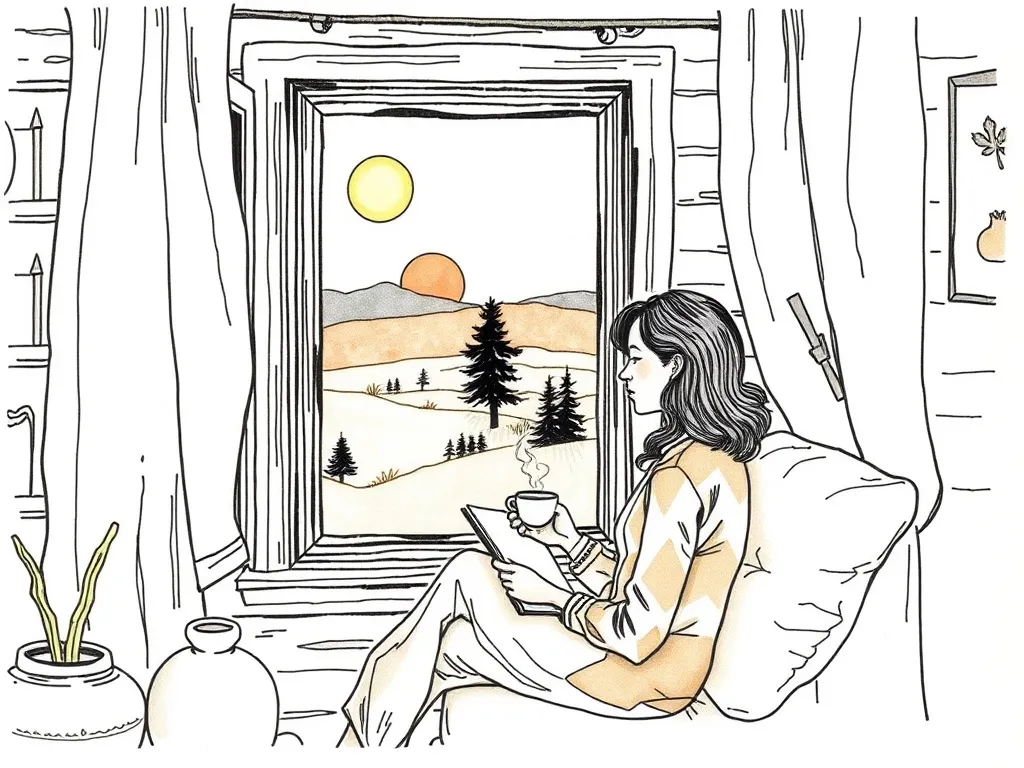
CBT-I in Practice: Tailoring Techniques for Alberta’s Unique Climate and Lifestyles
CBT-I’s adaptability makes it an excellent choice for a diverse population like Alberta’s.
For Shift Workers: Alberta’s economy often involves shift work, particularly in industries like oil and gas. Managing sleep around irregular schedules is challenging, and the extended daylight adds another layer of complexity. Fortunately, CBT-I strategies for shift workers are specifically designed to help individuals adapt their sleep patterns, emphasizing light management and consistent routines despite variable work hours.
Making the Right Choice for Insomnia Treatment: With various options available, deciding on the best approach for chronic insomnia can be daunting. Exploring the differences between CBT-I versus medication can help individuals make an informed decision based on their needs and desired long-term outcomes.
The Accessibility of Digital Sleep Therapy: For those in remote parts of Alberta or with busy schedules, the effectiveness of online CBT-I offers a flexible and accessible way to receive treatment without needing in-person appointments. This can be particularly beneficial during the summer when travel might be part of your plans.
Beyond Light: Other Environmental Factors Affecting Sleep: While the midnight sun is a primary concern, other environmental factors can influence sleep in Alberta. For instance, some people find themselves dealing with weather-related insomnia linked to phenomena like Chinook winds, even if less prevalent in summer, demonstrating how external conditions can impact sleep quality. Understanding all potential disruptors can contribute to a more comprehensive sleep management strategy.
Overcoming Common Hurdles
Implementing CBT-I techniques requires patience and consistency. You might not see immediate results, and there may be days when adherence feels difficult. It’s crucial to be persistent and remember that you are retraining deeply ingrained patterns. If self-guided CBT-I efforts prove insufficient, consider seeking guidance from a sleep specialist or therapist trained in CBT-I. They can provide personalized strategies and support.
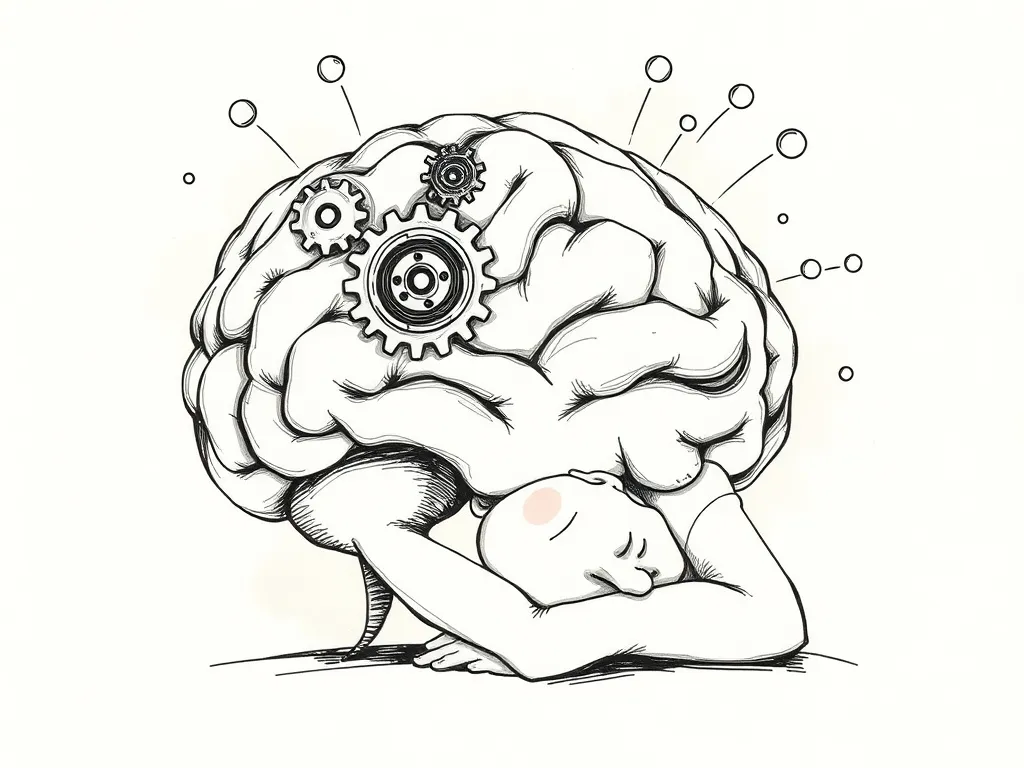
Conclusion: Embrace Your Alberta Summer, Sleep Soundly
Alberta’s long summer days are a cherished part of life in the province, offering unparalleled opportunities for outdoor enjoyment and connection. However, they don’t have to come at the expense of your sleep. By understanding the principles of CBT-I and diligently applying its techniques—especially those focused on light management, consistent routines, and cognitive restructuring—you can effectively manage the challenges of the midnight sun. Reclaim your nights, restore your energy, and truly thrive through the brightest season Alberta has to offer. Sweet dreams, Alberta!
FAQ: CBT-I and Summer Sleep in Alberta
Q1: How quickly can I expect to see results from using CBT-I techniques for summer sleep? A1: While individual results vary, many people begin to notice improvements in sleep quality within a few weeks of consistently applying CBT-I techniques. Full benefits often manifest over 6-8 weeks.
Q2: Do I need professional help to implement CBT-I, or can I do it myself? A2: Many CBT-I principles can be learned and applied independently through self-help guides or apps. However, for chronic or severe insomnia, or if you’re struggling to implement the techniques effectively, working with a therapist trained in CBT-I can significantly increase your success rate and provide personalized support.
Q3: Is it okay to use a sleep aid (like melatonin) along with CBT-I during Alberta summers? A3: CBT-I focuses on addressing the root causes of insomnia rather than relying on medication. While melatonin can sometimes be used short-term to help reset circadian rhythms, especially with significant light exposure, it’s generally recommended to discuss any medication use with a healthcare professional to ensure it aligns with your CBT-I program and overall health goals.
Q4: What if I travel frequently within Alberta during the summer? How does that affect my sleep routine? A4: Consistency is key, but travel can disrupt routines. When traveling, try to maintain your core sleep and wake times as much as possible. Continue to prioritize light management (e.g., portable blackout curtains, eye mask) and your wind-down routine. Re-establish your strict schedule as soon as you return home. Flexibility and returning to structure quickly are important.
Q5: Can CBT-I help with sleep issues that aren’t directly related to the midnight sun, such as anxiety or stress? A5: Absolutely. CBT-I is a comprehensive therapy that addresses the cognitive and behavioral factors contributing to insomnia, including anxiety and stress that often manifest as sleep difficulties. By teaching you to manage racing thoughts and promoting relaxation, CBT-I can be highly effective for various underlying causes of sleep problems, not just light exposure.
Assess Your Sleep Quality Today
Take our My Sleep Health Score assessment to get personalized insights about your sleep patterns and discover how CBT-I can help you achieve better sleep.

Don Schmidt
15+ years of experience in sleep therapy and Cognitive Behavioral Therapy for Insomnia (CBT-I). Passionate about connecting individuals struggling with sleep disorders to evidence-based, non-medical treatment solutions. Author of hundreds of articles and comprehensive guides on sleep health, CBT-I techniques, and overcoming insomnia. When not helping clients achieve better sleep, you can find me hiking with my family and dogs or enjoying a good book.
Ready to connect with a provider?
Allow us to connect you with a provider who can help.
